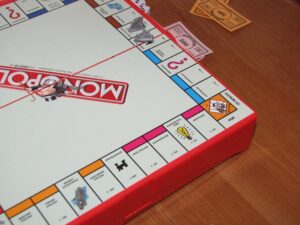
Analysis of the LIV Golf & LIV players Anti-Trust Suit Against the PGA.
On August 3, 2022, a complaint was filed against the PGA by Phil Mickelson, Talor Gooch, Hudson Swafford, Matt Jones, Bryson Dechambeau, Abraham Ancer, Carlos Ortiz, Ian Poulter, Pat Perez, Jason Kokrak and Peter Uihlein in The United States District Court For the Northern District of California San Francisco Division. It is case # 3:22-cv-04486. The suit is 106 pages.
Again, the mainstream media only portrays LIV Golf as the villain without sharing any logical analysis on the actual filing. The Tee Box Times herein will analyze the filings on the face of the causes of actions and remedies and give the readers a logical explanation of what those filings express along with what the possible outcomes could be before, during and after litigation.

Since the original filing by the players, LIV Golf has entered this suit. Due to the size and complexity of this filing, the Tee Box Time’s legal team will begin with this first segment concerning proposed violations of The Sherman Act by the PGA and continue segments over the next several weeks dissecting the suit and keeping the public abreast of other filings, decisions, etc…
The Plaintiffs begin their allegations discussing how the PGA Tour began when Jack Nicklaus, Arnold Palmer and other elite golfers in the 1960’s determined the PGA of America was not compensating them their market value and they split off the Players Tournament Division and formed the PGA Tour, which was to be a tax exempt entity presented to promote the common interests of professional tournament golfers.
The suit goes on to state that from that point the PGA Tour has grown into a monopoly of extreme size and “it has employed its dominance to craft an arsenal of anticompetitive restraints to protect its long-standing monopoly.” It further states that the PGA is diametrically opposed to LIV Golf and that the PGA has harmed the livelihoods of the LIV golfers. The suit states that “As part of its carefully orchestrated plan to defeat competition, the Tour has threatened lifetime bans on players who play in even a single LIV Golf event. It has backed up these threats by imposing unprecedented suspensions on players (including the Plaintiffs) that threaten irreparable harm to the players and their ability to pursue their profession. It has threatened sponsors, vendors, and agents to coerce players to abandon opportunities to play in LIV Golf events. The filing states “And it has orchestrated a per se unlawful group boycott with the European Tour to deny LIV Golf access to their members. The PGA Tour also has leaned on other entities in the so-called golf “ecosystem,” including certain entities that put on golf’s “Majors,” to do its bidding in its effort to maximize the threats and harm to any golfer who defies the Tour’s monopsonistic requirements and plays in LIV Golf events.”
Unlike other cases that have specific causes of action with elements that have to be proven, such as the one Patrick Reed filed, this case has added asserted facts that lead to the PGA being in violation of The Sherman Anti-Trust Act and California’s Cartwright Act.
The Sherman Act is a law the U.S. Congress passed to prohibit trusts, monopolies, and cartels. Its purpose was to promote economic fairness and competitiveness and to regulate interstate commerce. Ohio Sen. John Sherman proposed and passed it in 1890. The act signaled an important shift in American regulatory strategy toward business and markets. In essence, the Sherman Act protects small business from larger companies that either merge to form a monopoly or have become a monopoly on their own and basically squeeze the smaller competitors out of business. The complainants in this suit are alleging that the PGA has evolved into such an entity and that any person or entity that could become competition basically gets crushed by the PGA in one way or another. Is this true? Well, if the PGA has committed the actions herein listed and in the lawsuit, their actions definitely constitute tortuous interference of future and existing contracts, which are simple tort violations and they appear to violate The Sherman Act.

There are many other regulatory entities and statues that bleed off from the Sherman Act that create legal roadblocks for a company becoming a monopoly or becoming a monopoly then subsequently squeezing out the competition. In order to substantiate the facts to a Federal Judge and prove a violation of the Sherman Act the players herein must prove that the PGA, in its actions, has made attempts to stop the players and LIV Golf from growing and in the process have damaged them. Tee Box Times believes that they have done just that.
Let’s take a look at what must be proven by the players who filed this suit. The first question is whether the PGA is a monopoly? In order to determine that as a matter of law, other questions must be addressed. Did the PGA engage in anti-competitive conduct to preserve its position as basically “the only game in town”, which would lift it to the higher level of actually being a monopoly? Again, the Tee Box Times believes they did. On the face of the filing the players appear to have an extremely strong case. It appears that the PGA interfered in several potential contracts that LIV Golf was negotiating with other entities and it wasn’t just a few. The PGA simply spread fear throughout those entities and through a threatening manner bullied those entities in a way that indicated that if they dealt with LIV Golf, the repercussions from the PGA would be extensive. The PGA threatened to pull their business from many of these entities and threatened much more in other circumstances. Below are just a few examples of how the PGA interfered and basically attempted to push LIV Golf out of business.

Direct quotes from the filing:
LIV Golf reached out to numerous producer candidates, many of whom are independent contractors, who have communicated to LIV Golf that NBC and Golf Channel personnel have informed all producers that they will not be hired or renewed for any work with NBC or The Golf Channel moving forward if they work with LIV Golf.
LIV Golf tried to schedule events at a premier golf course, Sentosa Golf Club. Bob Tan, Chairman of Sentosa Golf Club, informed LIV Golf that Dominic Wall of the R&A called him and informed him that Sentosa Golf Club would be excluded and shunned by the rest of the world of golf if it worked with LIV Golf.
LIV Golf tried to engage Ticketmaster for ticketing at its events. Ticketmaster was prepared to work with LIV Golf until Ticketmaster pulled out of helping LIV Golf with ticket sales in response to pressure from the PGA Tour.
LIV Golf tried to engage a company known as Cueto to provide software for organizing event volunteers. Cueto was prepared to work with LIV Golf until Cueto informed LIV Golf that it cannot work with LIV Golf “because of the threat it received from the PGA Tour.”
LIV Golf tried to enter into a business relationship with Dick’s Sporting Goods. In response, Dick’s Sporting Goods informed LIV Golf that “given our relationship with the PGA Tour and our Tournament [PGA Tour Champions tournament], Dick’s Sporting Goods representatives agree it’s best to pass right now.”
The PGA Tour threatened numerous golf courses with adverse consequences if they hosted LIV Golf events. LIV Golf secured commitments from pristine high level courses, but the PGA Tour and the R&A retaliated against the owners of the venues with which LIV Golf contracted. The R&A punished one golf course owner by adopting a policy that it would not host The Open at his course in the future because he is giving LIV Golf “a platform,” and as the R&A is “firmly on the side of the traditional Tours [PGA Tour and European Tour].” The Tour informed the same golf course owner that it would never work with the Tour again because it had worked with LIV Golf.
In July 2022, LIV Golf’s branding team, Czarnowski, terminated its relationship with LIV Golf due to pressure from the PGA Tour.
The Tour threatened sponsors that they would lose opportunities to partner with the Tour if they worked with LIV Golf.
Does a company have a legal right not to do business with another entity? Yes they do, but an entity, such as the PGA, does not have the right to tortuously interfere with an existing or potential contract that is/are being negotiated or perfected. It is the Tee Box Time’s position that the PGA can be construed as a monopoly, because they do not have any competition in the U.S. and now that a new start-up company has been formed, which is competition to the PGA, the PGA is attacking LIV Golf through many angles of attack in order to damage and destroy the LIV Golf and the players.
The filing has some very damning claims against the PGA and when researching who the attorneys are for the players, I can guarantee you that they can back up the claims through evidence and discovery if necessary.
How will a victory benefit the players? Other than monetary awards, the court can enjoin the PGA from threatening any entity that they have previously threatened, enjoin the PGA from creating more rules within the PGA to harm players who went to play on LIV Golf, enjoin the PGA from meddling with the media, which we will discuss further in a future article, and much more. In essence, the judge can make a ruling so extreme that it actually harms the PGA to a major extent or even go the other direction and drop the entire case. It all lies on the judges decision. They have all the power.

Will the PGA be found in violation of the Sherman Act? Again and as we have stated before, it depends on the judge or subsequent judges if this goes to appeal. Unfortunately, we live in a legal world that is very political and as the Eagle’s Glenn Frey once said in the song ‘Smuggler’s Blues’ “The payoffs and the ripoffs and the things nobody saw”.
Look for our weekly articles throughout September that will be analyzing other causes of action and remedies that are being sought by LIV Golf and the LIV Golf players against the PGA in this anti-trust case and we will also be following the Patrick Reed case closely as well. There’s much more to come and it is appearing that this is evolving into possibly one of the largest stories in the history of not only golf, but in the sports arena as a whole.
Photo, Video & Media Credit: All photos herein are the property of LIV Golf and the Tee Box Times and were published by the Tee Box Times with their permission and consent. All content herein, other than property published by permission stated, is the property of teeboxtimes.com and any reproduction, other than normal social media sharing, is strictly prohibited. Copyright ©, teeboxtimes.com. For reprint permission contact us a rick@groupduncan.com


